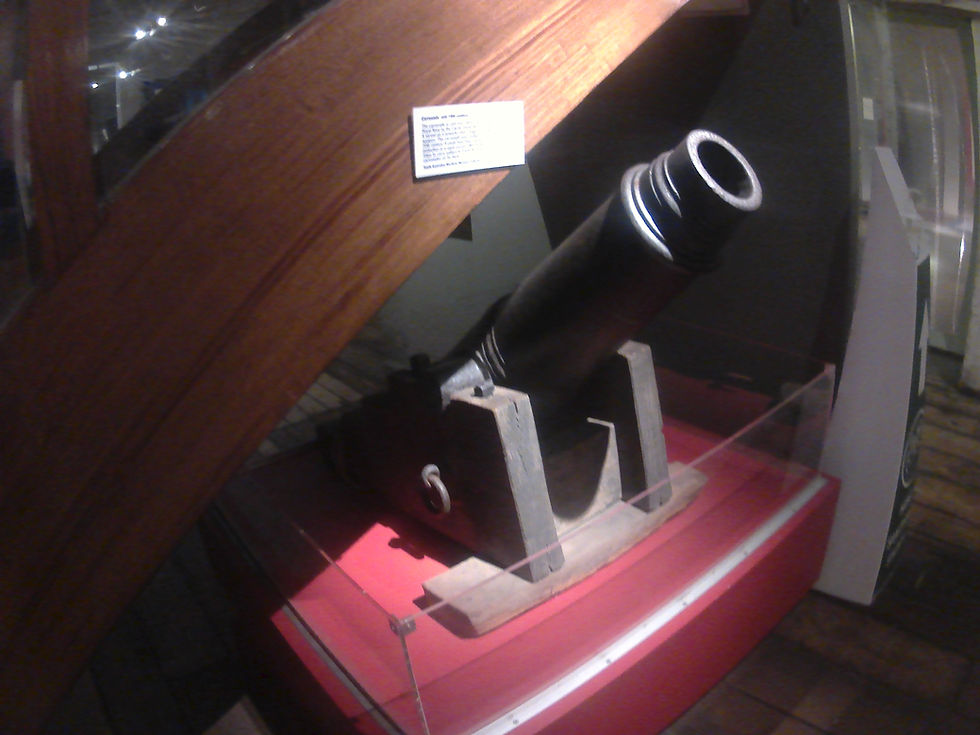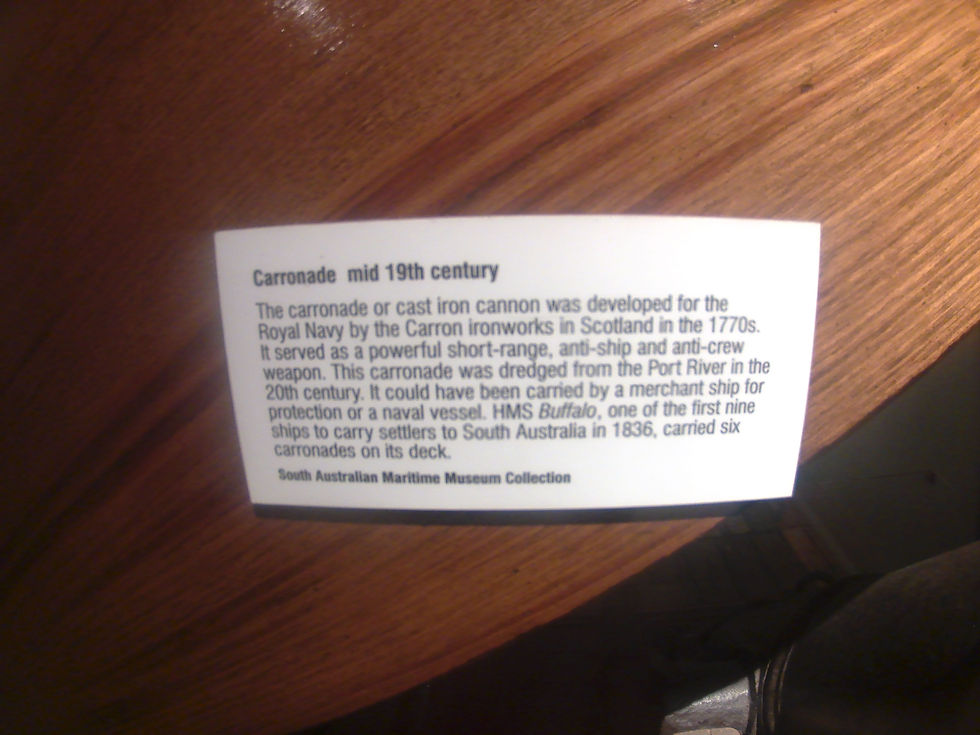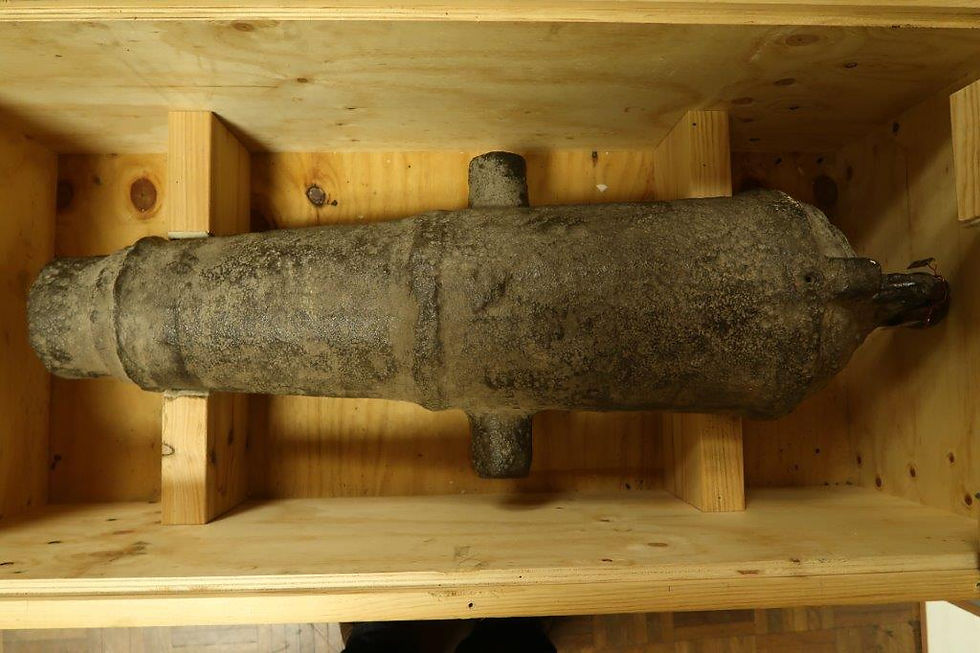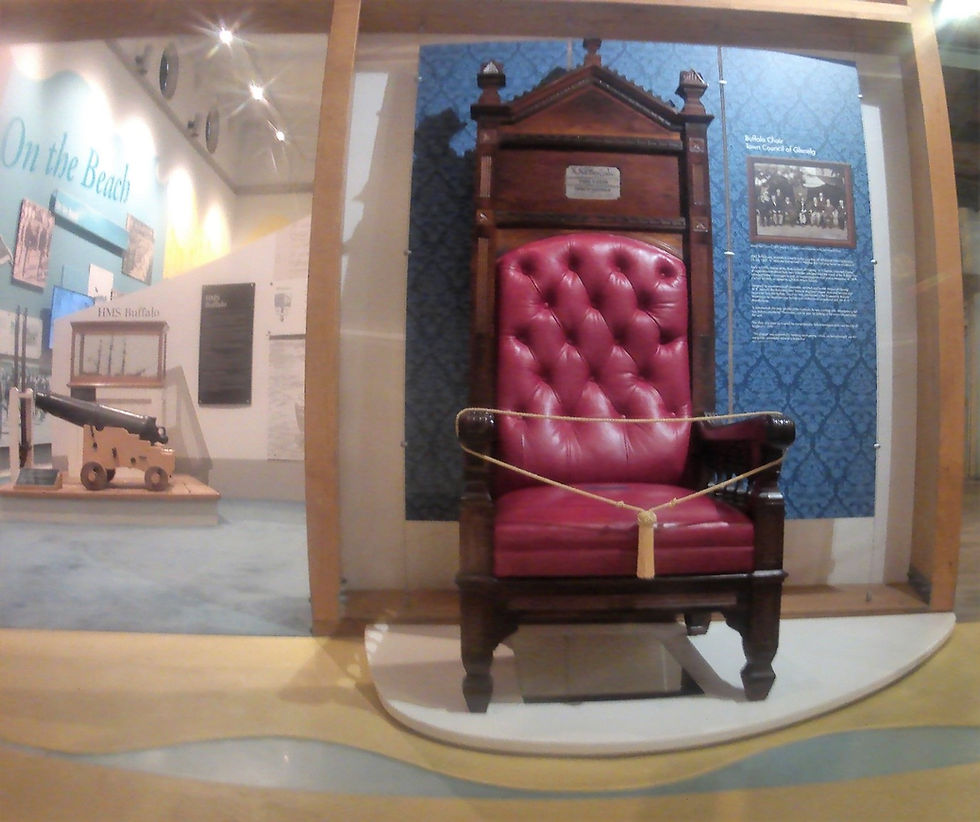Some Carronades in South Australia
- Steve Reynolds
- Jul 27, 2023
- 4 min read
According to this display at the South Australian Maritime Museum, there were six carronades on the deck of HMS Buffalo when it brought settlers to South Australia in 1836: -

This plaque states that this particular carronade* is thought to be from the mid-19th century. The carronade was a cast iron cannon manufactured by the Carron Ironworks in Scotland. They developed the carronade in the 1770s for the Royal Navy. It served as a “powerful short-range, anti-ship and anti-crew weapon”.

This particular carronade* was dredged from the Port River in the 20th century. It is thought that it may have come from a merchant ship or naval vessel.
* (Ruth Rhynas Brown, Group expert for The Big Cannon Project on Facebook says, "That's not a carronade, it's just a gunnade. Looks like a carronade- same nozzle, but it has trunnions and the proportions of a normal short gun; carronades are shorter and fatter.")
John L. Morris, a Top contributor tp The Big Cannon's Facebook page says that carronades "were commonly used as insurance guns in merchant ships. Lloyds required vessels they insured to be armed with some appropriate mix of carriage guns and swivels."
As I wrote at https://stevereynolds.wixsite.com/website/post/report-on-the-wrecking-of-the-hms-buffalo-and-archaeological-surveys-done-on-the-wreck (and https://stevereynolds.wixsite.com/website/post/the-1986-archaeological-survey-by-south-australian-divers-on-the-wreck-of-hms-buffalo-in-nz ), “Carronades from HMS Buffalo are discussed on pages 27 & 83 in “HMS Buffalo” by Robert Sexton. A carronade is “a short, large-calibre cannon, formerly in naval use”.

A drawing of the barrel of an 18-pounder carronade
(Source: page 83 of “HMS Buffalo” by Robert Sexton)
There is a drawing of the barrel of an 18-pounder carronade on page 83 of “HMS Buffalo”. It is a drawing of a carronade barrel said to be “mounted near the ‘old gumtree’ at Glenelg”. Such carronades were “landed on 29 May 1837”.
Here is a photo of a carronade recovered from the 1888 shipwreck Star of Greece by Doug Seton, Guy Hebblewhite and Ray Sedunary: -

Doug Seton, Guy Hebblewhite & Ray Sedunary with a carronade recovered from the Star of Greece
(Photo courtesy of Gus Hebblewhite)
That carronade from the Star of Greece shipwreck has been kept in storage by the South Australian Museum ever since it was brought up by Doug, Ray and Guy (in the 1970s?).

A 3D digital model of a carronade thought to be from the HMS Buffalo can be seen at https://skfb.ly/6ZtPS . The carronade is discussed at https://mercurybaymuseum.co.nz/hms-buffalos-cannon-or-carronade/ .
The web page found at https://gawler.nowandthen.net.au/Popham_William_Home describes another carronade (or two): -
“This small armament (described as a six-pounder carronade) is believed to have come from the HMS Buffalo, the ship that brought the first settlers to South Australia. It was bought for Dr William Home Popham by George Causby, a local entrepreneur who had many business interests in Gawler and in Adelaide.
Dr Popham was in possession of this cannon when he lived at Glenelg. A report in the Glenelg Illustrated, 1836-1896 stated that he fired it to commemorate the ‘coming of age of South Australia’ on 28 December 1857. Dr Popham arrived in South Australia during 1853 and resided at Glenelg until 1858 when he moved to Gawler, possibly bringing two cannons with him. Early in 1866, the residents of Gawler were advised that they would be given notice that the English mail had arrived by the ‘discharge of a six-pounder gun’, and ‘by the hoisting of the usual chequered flag with black ball at top’ in ‘Dr Popham’s garden’.
The cannon was used not only to signal the arrival but also to herald many events in Gawler: the arrival of the Duke of Edinburgh at Port Adelaide on 29 October 1867 ; two cannons fired a vice-regal salute as the Governor, Sir James Fergusson, arrived and departed for the occasion of laying the foundation for the Gawler Institute on 30 May 1870 ; to warn the citizens of Gawler on 3 July 1888 when it was thought that the Russians were coming to invade the country; a twenty-one gun salute during the visit to Gawler of the Governor of South Australia, Sir Fowell Buxton, to celebrate the 60th Anniversary of the reign of Queen Victoria on 14 July 1897 ; rejoicing the end of the siege of Ladysmith in February 1900 and the relief of Mafeking , and the regaining of Johannesburg during the Boer War; a three-gun salute to honour Queen Victoria’s birthday on 24 May 1900 ; welcoming the twentieth century and celebrating St George’s Day on 23 April 1902 .
Late in 1953, Mrs Esther Harris, a descendant of Dr Popham, offered the cannon to Gawler Council. The offer was declined, one Councillor remarking that the town already had two cannons that council was trying to be rid of. Mrs Harris then offered the cannon to the’ Archives Department’ with the explanation that it had belonged to her grandfather, Dr William Home Popham, and subsequently to her father, Dr Francis William Home Popham. After her father’s death in 1903, the cannon was in the custody of Mrs Harris’ mother and then another relative, who died. Mrs Harris lived interstate and was keen to see the cannon remain in South Australia. The Archives Department also declined the offer and eventually the Art Gallery of South Australia accepted the cannon.
The cannon remained at the Art Gallery of South Australia for the next thirty-four years during which time it was lent out on two or three occasions for display. One of those occasions was at the Gawler Post Office during the 1980s. During 1986, administrators at the Art Gallery of South Australia transferred ownership of the cannon to the History Trust of South Australia but continued to store it.
In mid-1988, after successful negotiations by Gawler Council, Dr Popham’s cannon was returned to Gawler and given ‘pride of place’ at Gawler Public Library. For the past ten years, however, it has been in local storage.
Researched and written by Anne Richards, Librarian Customer Services, Gawler Public Library.”
Figure 2. Details from the web page found at https://gawler.nowandthen.net.au/Popham_William_Home
Two of HMS Buffalo's six carronade(s) are displayed at the Old Gum Tree at Glenelg North.

One carronade is on display at the Bay Discovery Centre in Glenelg. Another one is located somewhere at the Gawler Council (see above). The one at the Bay Discovery Centre can be seen in the LHS background here below: -

Here it is again from a closer distance: -





Comments